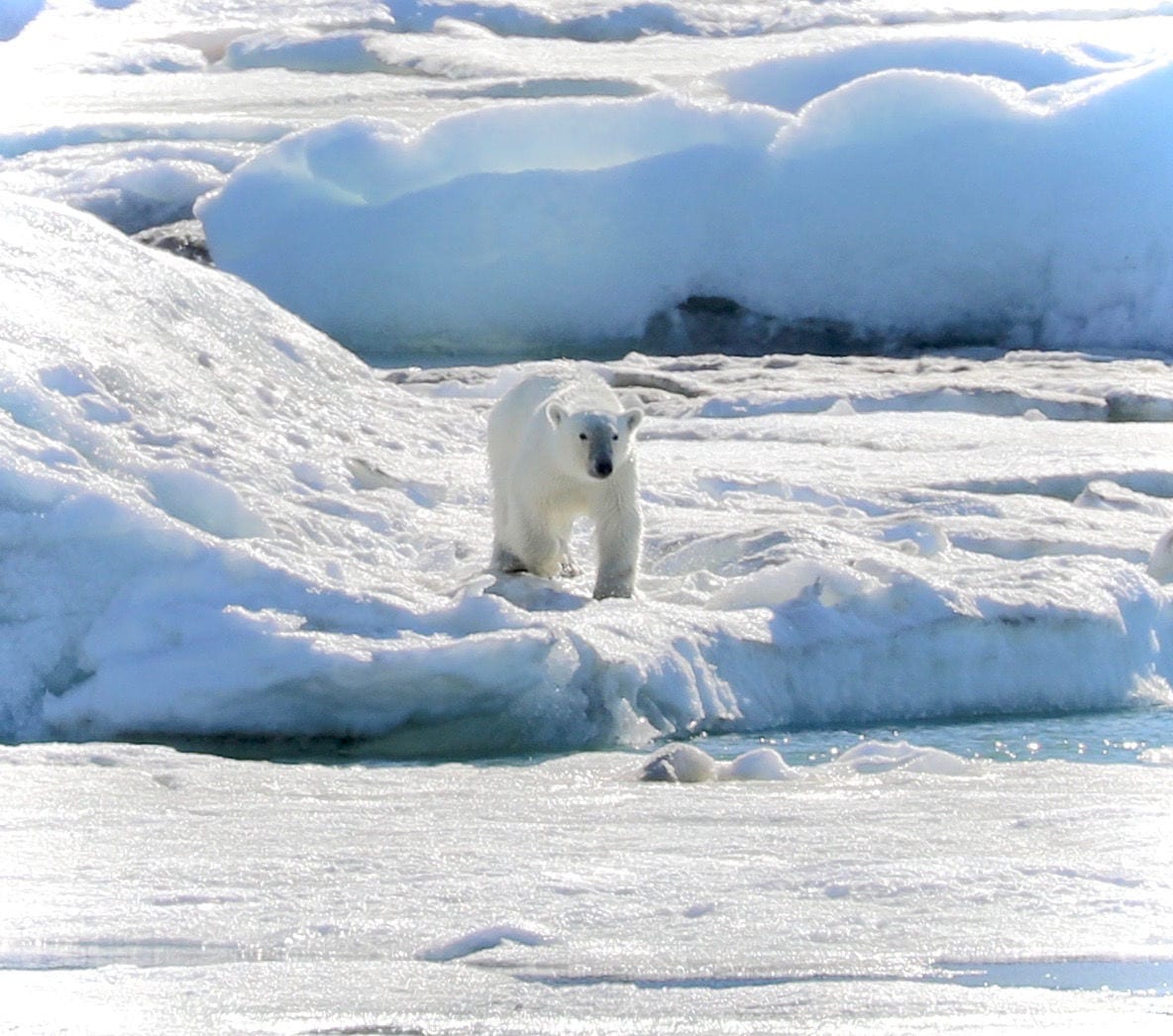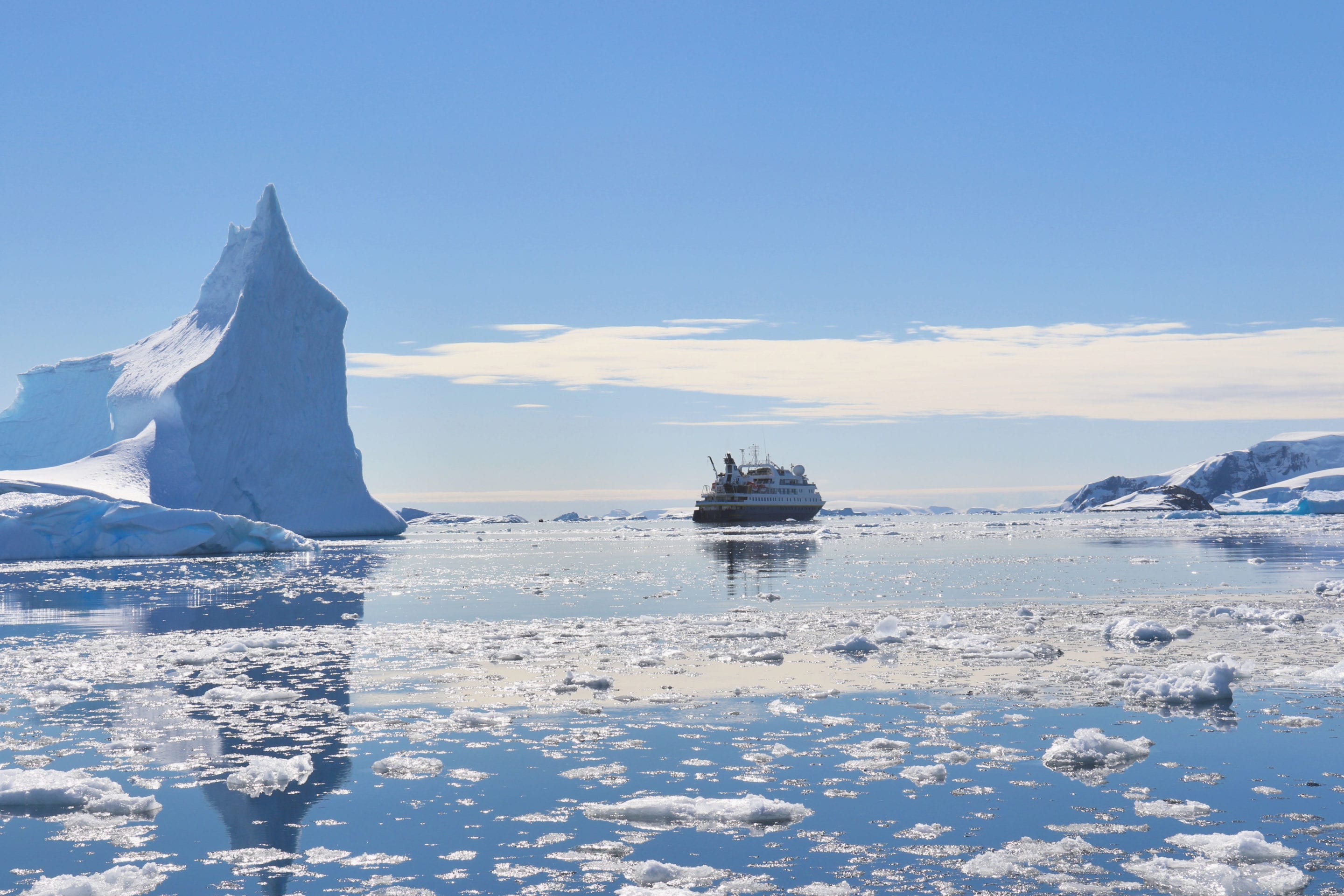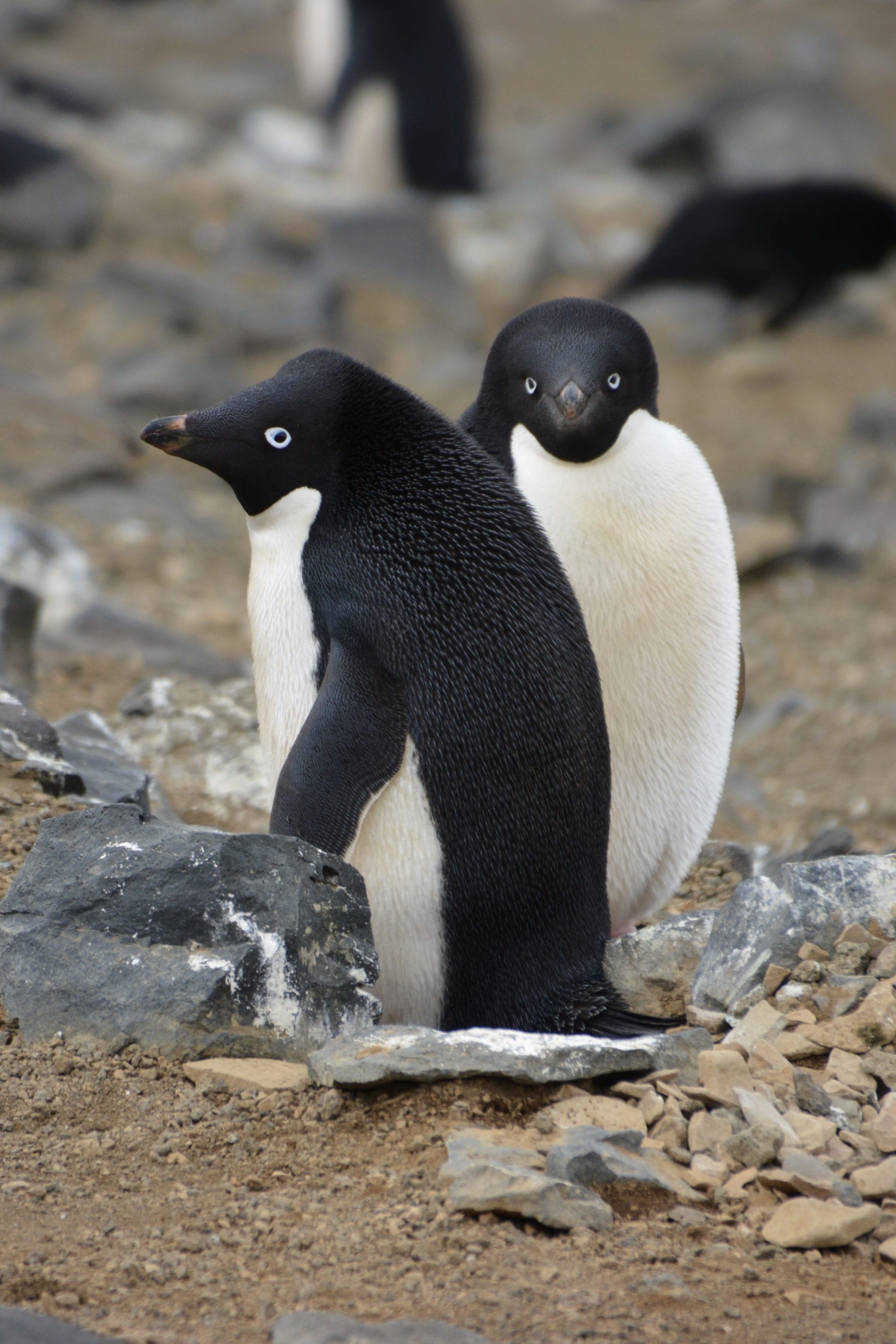Choosing Between the Arctic and Antarctica with Kids
- October 18, 2019
- 6 Min Read
Polar expeditions to both the Arctic and Antarctica are true experiences of a lifetime with immense educational value for families. Both destinations are vitally important for understanding how our planet sustains life and how the polar regions affect climate. Both places contain a vast icy wilderness with breathtaking, dramatic scenery and extraordinary wildlife unique to their respective regions.
The primary similarities, however, between trips to the Arctic and Antarctica end there from a travel experience perspective, and there’s much to know when making a decision around where to go. Of course, seeing both is a wonderful solution to this problem. But given limited time and money, particularly when it comes to traveling with kids, most families need to make a choice, at least when it comes to taking a polar expedition when kids are still in school.
Arctic Highlights
Encyclopedia Britannica defines the Arctic as the northernmost region of the earth and notes, “It has sometimes been used to designate the area within the Arctic Circle — a mathematical line that is drawn at latitude 66°30′ N, marking the southern limit of the zone in which there is at least one annual period of 24 hours during which the sun does not set and one during which it does not rise. This line, however, is without value as a geographic boundary, since it is not keyed to the nature of the terrain.” Reference https://www.britannica.com/place/Arctic-Circle.

Variety of Year-Round Access Points
An important difference between the Arctic and the Antarctic is accessibility. Families can visit the Arctic from any of eight countries, including Canada, Norway, Sweden, Finland, United States (Alaska), Denmark, Iceland and Russia. Given the wide scope of entry points, families can travel to the Arctic year-round and there are a vast number of experiences given the sheer geographic and cultural diversity among the countries. Due to the region’s northernmost position, winter is cold and dark, including periods where the sun doesn’t come up at all. But this also represents a time for fantastic adventure. We went to Alta, Norway, and had an incredible family adventure going dog sledding, ice fishing, skiing and snowmobiling. The Arctic is also home to the Northern Lights, and seeing them is pure magic.
Short Travel Distance, Comparatively
Flights into the Arctic circle can take just a few hours from major cities around the world; Antarctica is one of the most remote places on the planet, located across a notoriously inhospitable patch of ocean, the Drake Passage. Getting to Antarctica is a more time-intensive endeavor, but it is also part of the thrill. Although there are some operators flying to Antarctica now, the most common trip involves an expedition cruise and the sailing time from Ushuaia on the tip of South America to the edge of the Antarctic Peninsula is just short of 48 hours.
Popular Experiences
Experiencing Alaska is one of the most wonderful nature-focused trips to take with kids, and the beauty is that it is great for a range of ages and interests. The most popular first trip is usually a cruise through the Inside Passage in southeast Alaska, but with enough time, there is plenty to do farther afield into the Arctic Circle on land. Year-round experiences throughout the Arctic Circle across Scandinavia are becoming increasingly popular as travelers venture farther north for more remote landscapes, meeting with indigenous populations and wildlife. Iceland has been hugely popular over the past few years as families have taken in all kinds of adventures in this land of fire and ice.
Ready to plan a fabulous polar adventure with kids?
We can help! Our Family Travel Advisors can help you choose the right destination and outfitter, book vetted kid-friendly accommodations and more. Click to send us a request!

Polar Bears!
For an immersive and more remote adventure taking families within 650 miles of the North Pole, a visit to Svalbard, part of Norway, is a must. We had an extraordinary polar expedition last summer with Lindblad Expeditions on a trip focused on observing polar bears in their native habitat. This northernmost part of the Arctic is the closest to Antarctica in terms of dramatic icy visuals, including glaciers, sea ice and icebergs. The highlight of the show was the wildlife, including polar bears, walrus and beluga and humpback whales.
Antarctica Highlights
Encyclopedia Britannica defines Antarctica as the southernmost continent; its landmass is almost wholly covered by a vast ice sheet. It covers about 5.5 million square miles (14.2 million square km) and would be essentially circular except for the outflaring Antarctic Peninsula, which reaches toward the southern tip of South America (some 600 miles [970 km] away), and for two principal embayments, the Ross Sea and the Weddell Sea. Because of this vast ice, the continent supports only a primitive indigenous population of cold-adapted land plants and animals. The surrounding sea is as rich life as the land is barren. Reference https://www.britannica.com/place/Antarctica
Getting there is Part of the Adventure
The most popular way to get to Antarctica today is via an expedition cruise from the tip of South America. There are a several different itineraries the cruise lines follow depending on the length of the sailing. Given its southernmost position on the planet and intense weather conditions, there is a relatively small window to visit Antarctica between November and March. And contrary to the variety of different experiences available across the Arctic today, there’s a more limited array of operators providing trips to Antarctica, and the market pricing reflects this scarcity.

Land of Scale: Massive Icebergs and Mountains
We visited Antarctica in 2016 with Lindblad Expeditions and had an unbelievable once-in-a-lifetime travel experience. Many families on our Arctic sailing had also visited Antarctica and there was broad consensus that the scenery overall is more dramatic in Antarctica. Its icebergs are unbelievably massive — recently an iceberg the size of Los Angeles broke off the Antarctic ice shelf. Threading through icebergs on zodiacs is a thrilling and humbling experience.
What surprised us most, however, was the mountain landscape. Glacier-covered peaks are endless with vistas that rival anything we’ve seen in our most famous U.S. National Parks.

Penguins!
Most of the penguin species in Antarctica only exist in Antarctica. If they are well into their nesting season, the smell can be intense … but it’s worth any discomfort, as penguins are extremely entertaining to watch. And they have no fear of humans, so guests may observe them at a close distance. The different species are all shapes and sizes. This aspect of Antarctica is definitely a kid crowd-pleaser.
Whales, Seals and Bird Life
Leopard seals, elephant seals and orca whales are other stars of the show in this area. It takes a hardy creature to survive the intense conditions and a few fascinating birds including albatross and snow petrels may be seen as well.
Isolation
Antarctica is truly remote and a place few people on the planet will ever visit. And although both poles offer memorable experiences, if I had to choose just one and I had time and budget, I’d go to Antarctica. But the Arctic is incredible too! Lucky families will have the opportunity to create indelible memories in both places.
Relevant Links:
Browse all ideas for polar expeditions on Ciao Bambino
Antarctica: Read all about a journey to the White Continent with Lindblad Expeditions
Family vacation in the Arctic? Yes! And the time is now
Norway in winter: An incredible, action-packed adventure at the Arctic Circle
Why expedition travel is the ultimate educational adventure for families
Photos by Amie O’Shaughnessy.
Editor’s note: This post was accurate when published. We advise checking independently for the latest information and updates. Ciao Bambino does not accept responsibility or liability for any errors or omissions in, or for any actions taken based on, the information presented.






 travel recommendations, inspiring adventures, and exclusive travel offers
travel recommendations, inspiring adventures, and exclusive travel offers